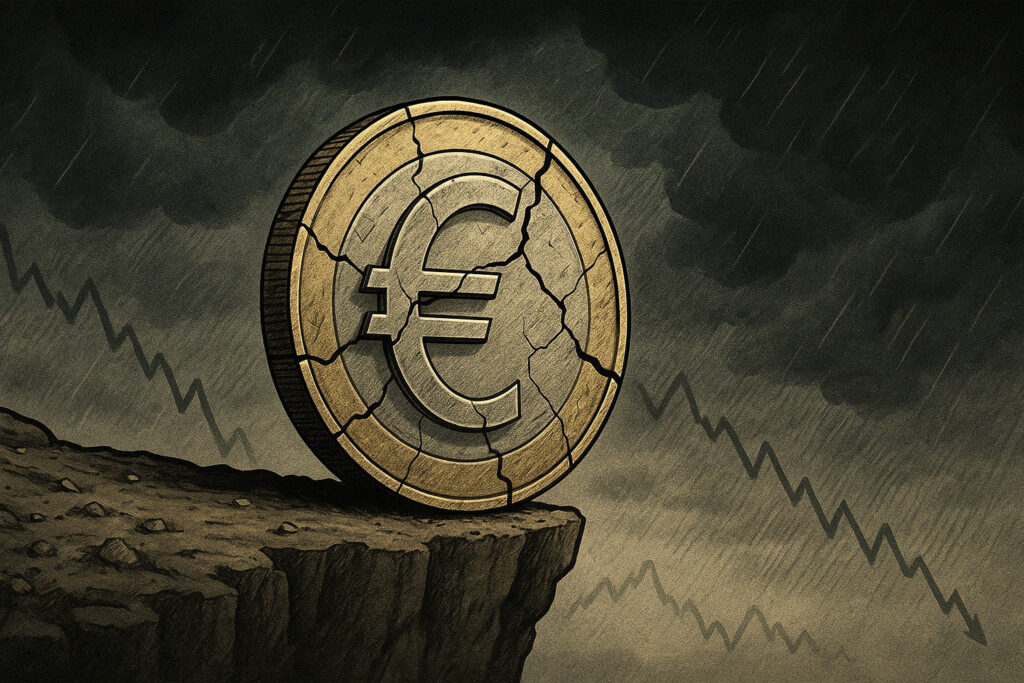A Flash Warning: Eurozone Economic Activity Contracts Again
The eurozone’s economic engine appears to be losing steam once more. On March 23, 2025, flash data released by S&P Global revealed that the Eurozone Composite PMI fell to 49.3, slipping below the 50.0 threshold that demarcates expansion from contraction. This marks the first time the index has signaled contraction since December 2024 and raises fresh concerns about the health of the European economy amid persistent inflation, high interest rates, and sluggish global demand.
The data comes at a precarious moment, just days after the European Central Bank (ECB) signaled a cautious but hawkish stance, balancing inflation containment with weak economic indicators. The PMI drop reflects notable weakness in both manufacturing and services, intensifying speculation about a possible technical recession in the first half of 2025.
Breaking Down the Numbers
Eurozone Flash PMI — March 2025 (Preliminary Data)
| Sector | March 2025 | February 2025 | Trend |
|---|---|---|---|
| Composite PMI | 49.3 | 50.7 | ▼ Contraction |
| Manufacturing PMI | 46.8 | 48.1 | ▼ Deepening |
| Services PMI | 50.1 | 51.9 | ▼ Flat Growth |
The weakness is most pronounced in the manufacturing sector, where the PMI of 46.8 indicates a continued and accelerating downturn. Services activity barely clung to expansion territory at 50.1, showing cracks in what had been a relatively resilient segment throughout late 2024.
Country Highlights: Germany and France Drag Down the Bloc
Germany, the eurozone’s largest economy, posted the weakest PMI data in the region, with its composite reading dropping to 48.2, dragged by a sharp decline in industrial output and a softening services sector. This points to persistent structural weakness in Germany’s manufacturing-heavy economy, compounded by weak exports and rising energy costs.
Meanwhile, France’s composite PMI slipped to 48.7, marking a reversal from February’s mild rebound. Service sector activity faltered as consumers pulled back amid stubborn inflation and lower real wages.
The periphery fared slightly better, with Spain and Italy both hovering near or above the 50 mark, but the core countries’ decline weighed heavily on the regional average.
Market Reaction: Euro Dips, Bonds Rally, Stocks Mixed
Financial markets responded swiftly to the data:
- EUR/USD dropped by 0.4% to 1.079, as investors priced in increased odds of an earlier-than-expected rate cut by the ECB.
- German 10-year Bund yields fell by 7 basis points to 2.19%, reflecting a flight to safety and speculation on monetary easing.
- The Euro Stoxx 50 closed down 0.6%, led by losses in banks and industrials.
- European banks underperformed broadly, with Deutsche Bank shedding 2.1% and BNP Paribas falling 1.8%.
ECB Dilemma: Stagflation Risks on the Rise?
This data reintroduces the specter of stagflation—slowing growth coupled with persistent inflation. Despite moderating headline inflation, core inflation in the euro area remains elevated at 3.2% YoY, well above the ECB’s target of 2%.
Just last week, ECB President Christine Lagarde reiterated that any loosening of monetary policy would depend on “clear and sustained disinflation,” but today’s PMI may tip the balance toward an earlier recalibration.
ECB Governing Council member Klaas Knot warned that, “Monetary policy must remain restrictive, but not inflexible,” hinting at an increasingly nuanced internal debate.
Analyst Take: “Downside Surprise Accelerates Policy Pivot Timeline”
Economists across major institutions reacted to the data with concern:
- ING’s Carsten Brzeski said: “A PMI below 50 is an alarm bell. This is not just a soft patch—it’s a clear sign that underlying demand is weakening.”
- Goldman Sachs revised their forecast, now projecting a Q1 GDP contraction of -0.2% for the eurozone.
- Morgan Stanley moved their ECB rate cut expectation forward to June 2025, from September previously.
What It Means for Investors
The current macroeconomic backdrop presents a complex puzzle for investors. Here’s how different asset classes could be impacted:
Equities
- Expect increased volatility in European stocks.
- Defensive sectors like healthcare and utilities may outperform cyclicals such as industrials and financials.
Euro Currency
- EUR may face continued downward pressure, especially against the USD and CHF.
- ECB forward guidance will be a key driver—any dovish pivot could accelerate weakness.
Bonds
- Government bonds across the eurozone are likely to rally further, benefiting from safe-haven flows and rate cut expectations.
- Peripheral spreads (e.g., Italy-Germany) will be worth watching if growth divergence intensifies.
Commodities
- Slowing European demand may weigh on industrial metals like copper and aluminum.
- Energy markets could also reflect muted European consumption.
Forward Outlook: Recession or Just a Growth Pause?
While a sub-50 PMI is technically indicative of contraction, some argue it’s too early to declare a full-fledged recession. The eurozone has seen such dips before—particularly in 2022 and early 2023—without tipping into a severe downturn, thanks to resilient labor markets and fiscal support.
Yet risks are mounting:
- Real wage stagnation continues to weigh on consumer demand.
- Geopolitical uncertainty, especially regarding Russia-Ukraine, remains a drag on confidence.
- China’s slower-than-expected recovery is undercutting external demand for European exports.
Whether the bloc escapes a recession may depend on the ECB’s agility, fiscal coordination among member states, and a pickup in global trade.
Conclusion: PMI Drop Is a Wake-Up Call
Today’s PMI release serves as a crucial reminder: the eurozone’s economic trajectory remains fragile, and policy missteps could tip the balance into a broader contraction. While the ECB maintains its inflation-fighting resolve, the risk of over-tightening in a weakening economy looms large.
As markets reassess their expectations for monetary policy, the focus shifts to next month’s inflation data, followed by April’s ECB policy meeting, both of which will likely define the trajectory of the eurozone economy for Q2.
